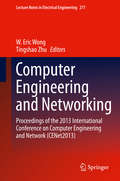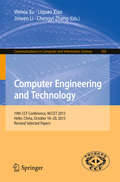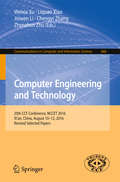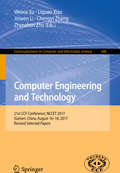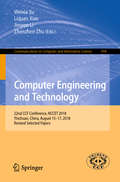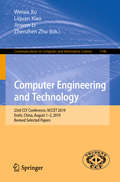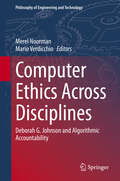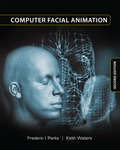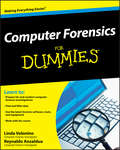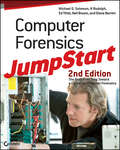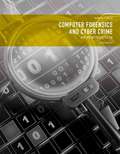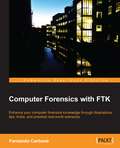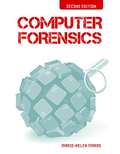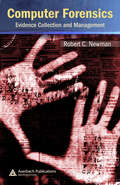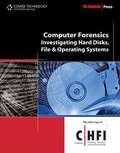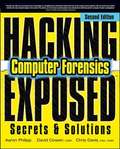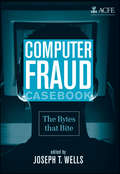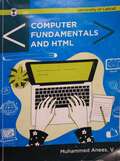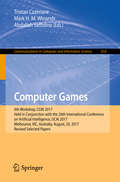- Table View
- List View
Computer Darpan class 3 - GSTB: કમ્પ્યુટર દર્પણ ધોરણ ૩
by Tejas R. Thakkarઓપનસોર્સ લિનક્સ ઓપરેટિંગ સિસ્ટમ આધારિત તેમજ ગુજરાત બોર્ડના કમ્પ્યૂટર વિષયને સંલગ્ન એકમાત્ર કમ્પ્યૂટર સિરીઝ.
Computer Darpan class 4 - GSTB: કમ્પ્યુટર દર્પણ ધોરણ ૪
by Tejas R. Thakkarઓપનસોર્સ લિનક્સ ઓપરેટિંગ સિસ્ટમ આધારિત તેમજ ગુજરાત બોર્ડના કમ્પ્યૂટર વિષયને સંલગ્ન એકમાત્ર કમ્પ્યૂટર સિરીઝ.
Computer Darpan class 5 - GSTB: કમ્પ્યુટર દર્પણ ધોરણ ૫
by Tejas R. Thakkarઓપનસોર્સ લિનક્સ ઓપરેટિંગ સિસ્ટમ આધારિત તેમજ ગુજરાત બોર્ડના કમ્પ્યૂટર વિષયને સંલગ્ન એકમાત્ર કમ્પ્યૂટર સિરીઝ.
Computer Darpan class 6 - GSTB: કમ્પ્યુટર દર્પણ ધોરણ ૬
by Tejas R. Thakkarઓપનસોર્સ લિનક્સ ઓપરેટિંગ સિસ્ટમ આધારિત તેમજ ગુજરાત બોર્ડના કમ્પ્યૂટર વિષયને સંલગ્ન એકમાત્ર કમ્પ્યૂટર સિરીઝ.
Computer Darpan class 7 - GSTB: કમ્પ્યુટર દર્પણ ધોરણ ૭
by Tejas R. Thakkarઓપનસોર્સ લિનક્સ ઓપરેટિંગ સિસ્ટમ આધારિત તેમજ ગુજરાત બોર્ડના કમ્પ્યૂટર વિષયને સંલગ્ન એકમાત્ર કમ્પ્યૂટર સિરીઝ.
Computer Darpan class 8 - GSTB: કમ્પ્યુટર દર્પણ ધોરણ ૮
by Tejas R. Thakkarઓપનસોર્સ લિનક્સ ઓપરેટિંગ સિસ્ટમ આધારિત તેમજ ગુજરાત બોર્ડના કમ્પ્યૂટર વિષયને સંલગ્ન એકમાત્ર કમ્પ્યૂટર સિરીઝ.
Computer Engineering and Networking: Proceedings of the 2013 International Conference on Computer Engineering and Network (CENet2013) (Lecture Notes in Electrical Engineering #10152)
by W. Eric Wong Tingshao ZhuThis book aims to examine innovation in the fields of computer engineering and networking. The book covers important emerging topics in computer engineering and networking, and it will help researchers and engineers improve their knowledge of state-of-art in related areas. The book presents papers from The Proceedings of the 2013 International Conference on Computer Engineering and Network (CENet2013) which was held on 20-21 July, in Shanghai, China.
Computer Engineering and Technology: 19th CCF Conference, NCCET 2015, Hefei, China, October 18-20, 2015, Revised Selected Papers (Communications in Computer and Information Science #592)
by Weixia Xu Liquan Xiao Jinwen Li Chengyi ZhangThis book constitutes the refereed proceedings of the 19th CCF Conference on Computer Engineering and Technology, NCCET 2015, held in Hefei, China, in October 2015. The 18 papers presented were carefully reviewed and selected from 158 submissions. They are organized in topical sections on processor architecture; application specific processors; computer application and software optimization; technology on the horizon.
Computer Engineering and Technology: 20th CCF Conference, NCCET 2016, Xi'an, China, August 10-12, 2016, Revised Selected Papers (Communications in Computer and Information Science #666)
by Weixia Xu Liquan Xiao Jinwen Li Chengyi Zhang Zhenzhen ZhuThis book constitutes the refereed proceedings of the 20th CCF Conference on Computer Engineering and Technology, NCCET 2016, held in Xi'an, China, in August 2016. The 21 full papers presented were carefully reviewed and selected from 120 submissions. They are organized in topical sections on processor architecture; application specific processors; computer application and software optimization; technology on the horizon.
Computer Engineering and Technology: 21st CCF Conference, NCCET 2017, Xiamen, China, August 16–18, 2017, Revised Selected Papers (Communications in Computer and Information Science #600)
by Weixia Xu Liquan Xiao Jinwen Li Chengyi Zhang Zhenzhen ZhuThis book constitutes the refereed proceedings of the 20th CCF Conference on Computer Engineering and Technology, NCCET 2016, held in Xi'an, China, in August 2016. The 21 full papers presented were carefully reviewed and selected from 120 submissions. They are organized in topical sections on processor architecture; application specific processors; computer application and software optimization; technology on the horizon.
Computer Engineering and Technology: 22nd CCF Conference, NCCET 2018, Yinchuan, China, August 15–17, 2018, Revised Selected Papers (Communications in Computer and Information Science #994)
by Weixia Xu Liquan Xiao Jinwen Li Zhenzhen ZhuThis book constitutes the refereed proceedings of the 22nd CCF Conference on Computer Engineering and Technology, NCCET 2018, held in Yinchuan, China, in August 2018.The 17 full papers presented were carefully reviewed and selected from 120 submissions. They address topics such as processor architecture; application specific processors; computer application and software optimization; technology on the horizon.
Computer Engineering and Technology: 23rd CCF Conference, NCCET 2019, Enshi, China, August 1–2, 2019, Revised Selected Papers (Communications in Computer and Information Science #1146)
by Weixia Xu Liquan Xiao Jinwen Li Zhenzhen ZhuThis book constitutes the refereed proceedings of the 23rd CCF Conference on Computer Engineering and Technology, NCCET 2019, held in Enshi, China, in August 2019. The 21 full papers presented were carefully reviewed and selected from 87 submissions. They address important and emerging challenges in the field of computer engineering and technology.
Computer Ethics Across Disciplines: Deborah G. Johnson and Algorithmic Accountability (Philosophy of Engineering and Technology #44)
by Merel Noorman Mario VerdicchioThis edited volume brings together philosophers and scholars in disparate fields who have engaged in Professor Deborah G. Johnson’s body of work throughout her long career. It appeals to both students and researchers and introduces Johnson’s thought to a broader audience. This text shows how with due to the resurgence of AI research, her work is more relevant than ever. The volume will help a new generation of scholars benefit from the conceptual insights that Johnson has provided. Her work on algorithmic accountability sets the tone in particular. Chapters illustrate how combining philosophy of technology across disciplines helps clarify the complex intricacies of AI and societies, in particular the topic of accountability. Other themes covered include moral agency and responsibility, transparency, gender and technology as well as ethics education.
Computer Facial Animation
by Keith Waters Frederic I. ParkeThis comprehensive work provides the fundamentals of computer facial animation and brings into sharper focus techniques that are becoming mainstream in the industry. Over the past decade, since the publication of the first edition, there have been significant developments by academic research groups and in the film and games industries leading to t
Computer Forensics For Dummies
by Linda Volonino Reynaldo AnzalduaUncover a digital trail of e-evidence by using the helpful, easy-to-understand information in Computer Forensics For Dummies! Professional and armchair investigators alike can learn the basics of computer forensics, from digging out electronic evidence to solving the case. You won't need a computer science degree to master e-discovery. Find and filter data in mobile devices, e-mail, and other Web-based technologies.You'll learn all about e-mail and Web-based forensics, mobile forensics, passwords and encryption, and other e-evidence found through VoIP, voicemail, legacy mainframes, and databases. You'll discover how to use the latest forensic software, tools, and equipment to find the answers that you're looking for in record time. When you understand how data is stored, encrypted, and recovered, you'll be able to protect your personal privacy as well. By the time you finish reading this book, you'll know how to:Prepare for and conduct computer forensics investigationsFind and filter dataProtect personal privacyTransfer evidence without contaminating itAnticipate legal loopholes and opponents' methodsHandle passwords and encrypted dataWork with the courts and win the casePlus, Computer Forensics for Dummies includes lists of things that everyone interested in computer forensics should know, do, and build. Discover how to get qualified for a career in computer forensics, what to do to be a great investigator and expert witness, and how to build a forensics lab or toolkit.Note: CD-ROM/DVD and other supplementary materials are not included as part of eBook file.
Computer Forensics JumpStart
by Michael G. SolomonEssential reading for launching a career in computer forensics Internet crime is on the rise, catapulting the need for computer forensics specialists. This new edition presents you with a completely updated overview of the basic skills that are required as a computer forensics professional. The author team of technology security veterans introduces the latest software and tools that exist and they review the available certifications in this growing segment of IT that can help take your career to a new level. A variety of real-world practices take you behind the scenes to look at the root causes of security attacks and provides you with a unique perspective as you launch a career in this fast-growing field. Explores the profession of computer forensics, which is more in demand than ever due to the rise of Internet crime Details the ways to conduct a computer forensics investigation Highlights tips and techniques for finding hidden data, capturing images, documenting your case, and presenting evidence in court as an expert witness Walks you through identifying, collecting, and preserving computer evidence Explains how to understand encryption and examine encryption files Computer Forensics JumpStart is the resource you need to launch a career in computer forensics.
Computer Forensics and Cyber Crime: an Introduction (Third Edition
by Marjie T. BritzThe leading introduction to computer crime and forensicsis now fully updated to reflect today's newest attacks, laws, and investigatory best practices. Packed with new case studies, examples, and statistics, Computer Forensics and Cyber Crime, Third Edition adds up-to-the-minute coverage of smartphones, cloud computing, GPS, Mac OS X, Linux, Stuxnet, cyberbullying, cyberterrorism, search and seizure, online gambling, and much more. Covers all forms of modern and traditional computer crime, defines all relevant terms, and explains all technical and legal concepts in plain English, so students can succeed even if they have no technical, legal, or investigatory background.
Computer Forensics with FTK
by Fernando CarboneThis tutorial contains detailed instructions with useful integrated examples that help you understand the main features of FTK and how you can use it to analyze evidence. This book has clear and concise guidance in an easily accessible format. This tutorial-based guide is great for you if you want to conduct digital investigations with an integrated platform. Whether you are new to Computer Forensics or have some experience, this book will help you get started with FTK so you can analyze evidence effectively and efficiently. If you are a law enforcement official, corporate security, or IT professional who needs to evaluate the evidentiary value of digital evidence, then this book is ideal for you.
Computer Forensics: Cybercriminals, Laws, and Evidence
by Marie-Helen MarasAn Updated Edition of the Definitive Computer Forensics Text. Updated to include the most current events and information on cyberterrorism, the second edition of Computer Forensics: Cybercriminals, Laws, and Evidence continues to balance technicality and legal analysis as it enters into the world of cybercrime by exploring what it is, how it is investigated, and the regulatory laws around the collection and use of electronic evidence. Students are introduced to the technology involved in computer forensic investigations and the technical and legal difficulties involved in searching, extracting, maintaining, and storing electronic evidence, while simultaneously looking at the legal implications of such investigations and the rules of legal procedure relevant to electronic evidence. Significant and current computer forensic developments are examined, as well as the implications for a variety of fields including computer science, security, criminology, law, public policy, and administration.
Computer Forensics: Evidence Collection and Management
by Robert C. NewmanComputer Forensics: Evidence Collection and Management examines cyber-crime, E-commerce, and Internet activities that could be used to exploit the Internet, computers, and electronic devices. The book focuses on the numerous vulnerabilities and threats that are inherent on the Internet and networking environments and presents techniques and suggestions for corporate security personnel, investigators, and forensic examiners to successfully identify, retrieve, and protect valuable forensic evidence for litigation and prosecution. The book is divided into two major parts for easy reference. The first part explores various crimes, laws, policies, forensic tools, and the information needed to understand the underlying concepts of computer forensic investigations. The second part presents information relating to crime scene investigations and management, disk and file structure, laboratory construction and functions, and legal testimony. Separate chapters focus on investigations involving computer systems, e-mail, and wireless devices. Presenting information patterned after technical, legal, and managerial classes held by computer forensic professionals from Cyber Crime Summits held at Kennesaw State University in 2005 and 2006, this book is an invaluable resource for thosewho want to be both efficient and effective when conducting an investigation.
Computer Forensics: Investigating Hard Disks, File and Operating Systems:
by EC-CouncilThe text provides the knowledge and skills to identify, track, and prosecute the cyber-criminal. The series is comprised of five books covering a broad base of topics in Computer Hacking Forensic Investigation, designed to expose the reader to the process of detecting attacks and collecting evidence in a forensically sound manner with the intent to report crime and prevent future attacks.
Computer Forensics: Secrets and Solutions (Second Edition)
by David Cowen Aaron Philipp Chris Davis"Provides the right mix of practical how-to knowledge in a straightforward, informative fashion that ties it all the complex pieces together with real-world case studies. . . . Delivers the most valuable insight on the market. The authors cut to the chase of what people must understand to effectively perform computer forensic investigations. " --Brian H. Karney, COO, AccessData Corporation The latest strategies for investigating cyber-crime Identify and investigate computer criminals of all stripes with help from this fully updated. real-world resource. Hacking Exposed Computer Forensics, Second Edition explains how to construct a high-tech forensic lab, collect prosecutable evidence, discover e-mail and system file clues, track wireless activity, and recover obscured documents. Learn how to re-create an attacker's footsteps, communicate with counsel, prepare court-ready reports, and work through legal and organizational challenges. Case studies straight from today's headlines cover IP theft, mortgage fraud, employee misconduct, securities fraud, embezzlement, organized crime, and consumer fraud cases. Effectively uncover, capture, and prepare evidence for investigation Store and process collected data in a highly secure digital forensic lab Restore deleted documents, partitions, user activities, and file systems Analyze evidence gathered from Windows, Linux, and Macintosh systems Use the latest Web and client-based e-mail tools to extract relevant artifacts Overcome the hacker's anti-forensic, encryption, and obscurity techniques Unlock clues stored in cell phones, PDAs, and Windows Mobile devices Prepare legal documents that will hold up to judicial and defense scrutiny
Computer Fraud Casebook: The Bytes that Bite
by Joseph T. WellsThis one-of-a-kind collection consists of actual cases written by fraud examiners out in the field. These cases were hand selected from hundreds of submissions and together form a comprehensive picture of the many types of computer fraud how they are investigated, across industries and throughout the world. Topics included are email fraud, on-line auction fraud, security breaches, counterfeiting, and others.
Computer Fundamentals And HTML - Calicut University
by Muhammed Anees. V"Computer Fundamentals and HTML" authored by Muhammed Anees. V, a distinguished faculty member at the Department of Computer Science, Cochin University of Science and Technology, stands as a comprehensive guide published by The Calicut University Central Co-Operative Stores Ltd in 2022. Tailored for students enrolled in diverse BSc courses, this book aligns seamlessly with the curriculum set by the esteemed University of Calicut. Its content spans two significant domains: the foundational aspects of computing, covering hardware, software, computer organization, number systems, Boolean algebra, problem-solving methodologies, and algorithms; and a detailed exploration of HTML, encompassing the rudiments of web design, an overview of HTML5, advanced HTML concepts, and CSS. By prioritizing simplicity, clarity, and conciseness, the book adeptly elucidates intricate concepts, supplemented by practical applications and examples. Notably, it diligently references its information sources and encourages constructive feedback from its readers, fostering an environment conducive to continuous improvement and enhanced learning experiences.
Computer Games
by Tristan Cazenave Mark H.M. Winands Abdallah SaffidineThis book constitutes revised selected papers from the 6th Workshop on Computer Games, CGW 2017, held in conjunction with the 26th International Conference on Artificial Intelligence, IJCAI 2017, in Melbourne, Australia, in August 2017. The 12 full papers presented in this volume were carefully reviewed and selected from 18 submissions. They cover a wide range of topics related to computer games; discussing six abstract games: Chinese Checkers, Chinese Dark Chess, Hex, Othello, Poker, and SameGame.

